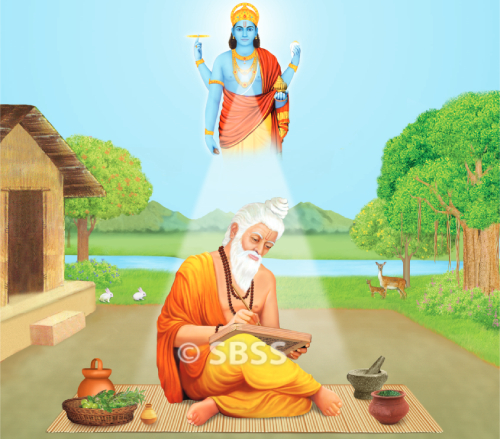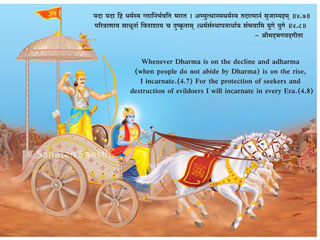Ayurveda for a healthy life ! – 18/2023
 Stages of evolution
Stages of evolution
Evolution of disease deals with 1. Various aetiological factors 2. How aetiological factors bring about changes in the structural and the functional units of the body that is vata, pitta and kapha 3. How these molecular changes bring structural derangement in various tissues and organs 4. How these structural changes derange the function of the organs 5. How the deranged function of one organ leads to the derangement of other organs that is complications.
Ayurveda describes in detail the various stages of evolution of disease as 1. Chaya that is accumulation of doshas because of action of aetiological factors, 2. Prakopa that is further increase in the doshas, 3. Prasara that is dissemination of the doshas which correspond to the stage of septicemia, viremia or toxaemia, 4. Sthanasanshraya that is localisation of dosha in a particular tissue or organ, 5. Vyakti that is manifestation of disease because of functional derangement, 6. Bheda that is further differentiation into the sub-type of the disease.
Ayurveda emphasises that the physician should not allow the disease to evolve further by recognising manifestations of the disease in its incubation period and guiding the patient appropriately. It is surprising that even 5,000 years ago, Ayurvedic physician could visualise the derangement at molecular level as the root cause of disease. Ayurveda has rightly emphasised the importance of understanding Evolution of disease (Pathogenesis). Unless the physician gets insight into Evolution of diseases, he cannot treat the patient appropriately. A physician who does not bother to go to root cause of the disease suppress the symptoms and is unable to eradicate the disease. This book describes in detail the basic principles of pathogenesis which will help the reader to understand pathogenesis of any symptom or disease.
One can’t but appreciate the wisdom of ancient physicians, when one realises that our understanding of the disease process and its evolution has not altered significantly even today, in spite of all the modern research.
Roganam Utpatti Vibhagashcha
(Disease – Its Origin and Classification)
A. Disease : The unbalanced state of tissues, doshas and waste products is defined as disease, where as their balanced state is termed as health. Health is happiness, whereas disease is sorrow. When the dhatus, doshas or mal as are affected by increased, decreased or abnormal doshas, the disease sets in.
The word disease is derived from ‘dis’ and ‘ease’ meaning disturbance of ease. The synonyms of disease in Ayurveda are :
1. रोगः पाप्मा ज्वरो व्याधिः विकारो दुःखमामयः ।
यक्ष्माऽतङ्कगदाबाधाः शब्दाः पर्यायवाचिनः ।। – वा. नि. १.१
The words Roga, Vyadhi, Dukkha and Abadha all of which are synonyms of the word disease, which means pain or sorrow.
2. Papma
पापस्य कर्मणः फलमिति पाप्मा ।
One which arises as a result of sins.
3. Aamaya
प्रायेण आमसमुत्थत्वेनामय इत्युच्यते । – च. नि. ५
One which arises as a result of indigestion.
4. Vikara
One which is associated with disturbed structure or functions of various organs.
5. Jwara
ज्वरयति इति ज्वरः । ज्वरयति संतापयति।
One which is associated with fever and irritability of mind.
6. Yakshma
One which is associated with wasting.
7. Atanka
कृच्छ्र जीवने इत्यस्य धातोः रूपमातङ्क इति ।
One which is associated with unbearable state.
8. Gada
गद इव गदः अनेककारणानन्यत्वात् ।
One, which can arise from various aetiological factors.
1. Origin of diseases
In the beginning of Satyayuga, men were endowed with vitality equal to that of God’s. Exceedingly faultless and unhampered in their powers, they had direct knowledge of Gods. The God like sages knew the Divine law, and the sacrificial rituals. They possessed body which were compact and firm and had clear sense and mind. They had good complexion and their speed, strength and power resembled those of the wind. They were free from fear, desire, aversion, infatuation, greed, anger, pride, diseases, laziness, fatigue, languor and the spirit of acquisition. They were endowed with unlimited longevity. For the benefit of these people of heroic minds, qualities and deeds, the crops were replete with wonderful taste, potency, post-digestive effect, specific action and virtue, as the earth during the dawn of the golden age was charged to the full with all excellent qualities.
During later part of Krutayuga or Satyayuga, those who were better financially ate more and became obese. By over-indulgence this heaviness of body bred lassitude, lassitude gave rise to indolence, indolence created the need of accumulation and necessitated acquisition. The spirit of acquisition engendered greed. The qualities of earth also deteriorated gradually along with the qualities of man.
Thereafter, bodies of human beings failing to receive nutrition as before from the progressively deteriorating quality of food along with lack of exercise and adverse effects of exertion, heat and wind, soon succumbed to attacks of fever and other diseases. Thus there was a gradual decline in the life span of the successive generations. Thereafter in the second or silver age that is Tretayuga, greed brought malice in its way and led to falsehood, falsehood let loose lust, anger, vanity, hatred, cruelty, aggression, fear, grief, anxiety, distress and the like. Consequently, in the second age, virtue found itself deprived of a quarter of its plenitude. From this quarterly loss in virtue, there followed a similar deterioration in the duration of the succeeding age and in the beneficent power of the earth and other elements. It is in consequence of this deterioration that there took place a corresponding deterioration in the purity, taste, potency, post-digestive effects, specific action and quality of herbs.
युगे युगे धर्मपादः क्रमेणानेन हीयते ।
संवत्सरशते पूर्णे याति संवत्सरक्षयम् ।।
देहिनामायुषः काले यत्र यन्मानमिष्यते ।।
इति विकाराणां प्रागुत्पत्तिहेतुः उक्तो भवति । – च. वि. ३
In this manner righteousness dwindled in each succeeding
age by one quarter and the protoelements too suffered similar deterioration till eventually the world would come to dissolution.
When a hundredth part of the length of an age period is past, then the life span of creatures gets less by one year. This is said with reference to the normal determination of life span in a
given age. Thus not following the path of righteousness and not following the dictates of conscience are the root cause of all the diseases.
2. Classification of diseases
Although diseases are numerous, their classification makes it easier for us to understand them. Keeping in mind several perspectives, our ancient teachers have classified numerous ailments in an exceptional manner. This classification is useful while treating the ailments.
Diseases are classified in various ways as follows –
A. Diseases of body and mind
It is based on whether the disease affects the body or mind. Increase, decrease or vitiation of doshas, dhatus and malas gives rise to diseases of body. The root causes of mental diseases are non-fulfilment of one’s desires and presence of unpleasant situations. These factors increase raja and tama qualities of mind. The increased raja gives rise to emotional upsets such as anger, sorrow, jealousy, hatred & greed. The increased tama gives rise to laziness, ignorance, inability to take decisions and unclear thoughts. The increased raja and tama, in turn disturb vata, pitta and kapha doshas and gives rise to mental as well as psycho-somatic illness.
B. Nija and Agantu diseases
Nija : The word nija means self. The root cause of all nija that is self induced diseases is not following dictates of one’s conscience. The indiscretions in diet and activities disturb the balance of vata, pitta and kapha and give rise to various illness.
Agantu : These diseases are caused by external factors like injury, burns, accidental poisoning, exposure to cyclones, lightning and earthquakes, bites of animals and insects, invasion of body by germs and supernatural powers like ghosts, curses etc. In agantu diseases, the tissues or organs are affected first and the balance of doshas is disturbed later.
C. Ekadoshaja, Dwandwaja and Sannipatika diseases
The diseases are classified according to the number of doshas affected. In ekadoshaja disease, only one dosha is affected. In dwandwaja, two doshas are affected, while in sannipatika diseases all the three doshas are affected. The increase in various doshas may be mild, moderate or severe.
पृथक्त्रयः स्युस्तैर्वृद्धैव्र्याधयः पञ्चविंशतिः । – च. सू. १७.४१
Depending on the permutations and combinations of degrees of rise in various doshas, one gets twenty five types of sannipatika example In ekolbana sannipata, one doshas is very much increased, whereas other doshas are only slightly increased. Similarly, all the three doshas may be decreased in varying degrees. In Heena-Madhya-Adhika sannipata, one dosha is slightly increased, second dosha is moderately increased, while third dosha is very much increased. (Cont’d)

 Take Disciplinary Action Against Charitable Hospitals Violating Rules : Surajya Abhiyan
Take Disciplinary Action Against Charitable Hospitals Violating Rules : Surajya Abhiyan Detergent found in ice-creams, phosphoric acid in soft drinks !
Detergent found in ice-creams, phosphoric acid in soft drinks ! Radiant Thoughts of Sachchidananda Parabrahman (Dr) Jayant Athavale
Radiant Thoughts of Sachchidananda Parabrahman (Dr) Jayant Athavale Law banning Conversion of Religion is against Individual Freedom : Babbles Former Judge S Muralidhar
Law banning Conversion of Religion is against Individual Freedom : Babbles Former Judge S Muralidhar Editorial : Khalistan, Balochistan and Pakistan
Editorial : Khalistan, Balochistan and Pakistan After India becomes a ‘Hindu Rashtra’, Russia will embrace Hinduism and spread it globally : Nostradamus’ Prophecy
After India becomes a ‘Hindu Rashtra’, Russia will embrace Hinduism and spread it globally : Nostradamus’ Prophecy